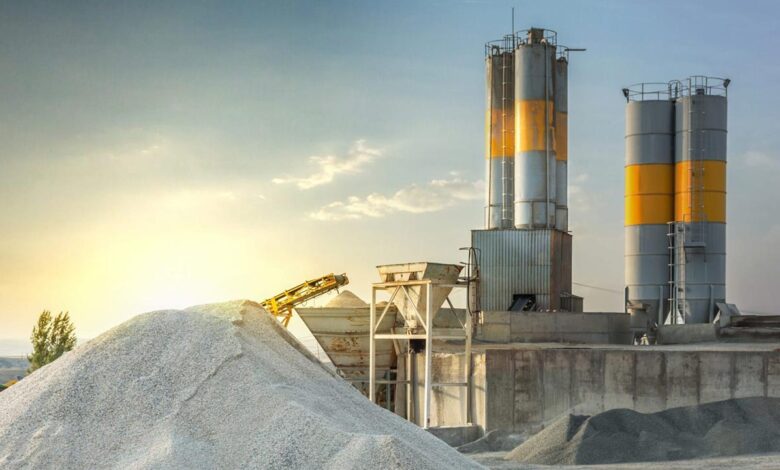Adani Group is now the 2nd largest cement player as the acquisition of Ambuja Cements, ACC completes.

Adani Group is now the 2nd largest cement player as the acquisition of Ambuja Cements, ACC completes.
Ambuja Cements and ACC, two of the largest cement producers in India, have been fully acquired by Gautam Adani’s Group. The Group is presently the second-largest operator in the cement industry in the nation. Holcim completed the deal with Adani Group by selling all of its shares of ACC and Ambuja Cements for 385 rupees each and 2,300 rupees each, respectively. The entire amount of cash received by Holcim was $6.4 billion.
Gautam Adani assumed control as board chairman of Ambuja Cements. ACC named his older son Karan chairman and non-executive director, while. Considering that Holcim’s representatives have left the boards, Karan will be a non-executive director at Ambuja Cements.
The two cement companies were taken by Adani, making it the largest buyout in the country’s history of the infrastructure and materials sector.
By the governance philosophy of the Adani Portfolio, the board committees of both Ambuja Cements and ACC have also been reformed.
Together, the two cement producers make Adani the second-largest cement operator in India, behind UltraTech Cement from the Aditya Birla Group.

According to Forbes, Gautam Adani, the head of the Adani Group and the new richest man in India, beat off Jeff Bezos and Bernard Arnault to overtake Elon Musk being the second-richest person in the world.
A preferential convertible warrant allocation to an Adani group promoter entity got approved by the Ambuja Cements board to raise an extra Rs 20,000 crore. To become the largest cement player in India by 2030, this fund would be used to build out extra capacity.
Gautam Adani claims that the exciting aspect of the cement industry is India’s headroom for expansion, which exceeds that of every other nation well beyond 2050. In May this year, the Adani Group revealed that it has signed a deal to acquire most of Holcim Ltd.’s Indian operations.

Currently, Ambuja Cements and ACC have a 67.5 MTPA installed production capacity. The two businesses, which are represented by their 14 integrated units, 16 grinding units, 79 ready-mix concrete facilities, and more than 78,000 channel partners throughout India, are among the strongest brands in India with manufacturing and supply chain infrastructure.
On the boards of the two companies, Adani Group swiftly appointed independent directors. These included former Shell India president Nitin Shukla on the ACC board and former State Bank of India (SBI) chairman Rajnish Kumar on the Ambuja Cement board.
The Adani family completed the acquisition through their special purpose business, Endeavour Trade and Investment Ltd. after reaching a deal with the Swiss company Holcim and accepting an open bid.
Adani would hold 63.15 percent of Ambuja Cements and 56.69 percent of ACC, of which 50.05 percent is held through Ambuja Cements, according to the announcement.

Ambuja Cements and ACC Ltd currently have a combined market value of USD 19 billion.
Including Barclays Bank and Deutsche Bank AG, “the transaction was financed by facilities amounting to USD 4.50 billion available from 14 international institutions.”
Gautam Adani stated that the economics of cement depend on the cost of energy, the cost of logistics and distribution, and the use of digital platforms to revolutionize production and increase the effectiveness of the supply chain significantly.
“Additionally, we will be able to produce premium quality green cement by the principles of a circular economy thanks to our position as one of the largest renewable energy firms in the world. We are on course to become the largest and most productive cement manufacturer by the year 2030 based on all of these metrics,” said he.

The cement industry of India
Cement was the ideal hub-and-spoke concept 15 years ago. India’s northern and southern regions produced more than they could eat, and the country’s western and eastern regions were content to take in the surplus. Cement production back then was meticulously planned, and between 2005 and 2008 because of high demand, utilization rates across India exceeded 90%. Due to this, cement companies gained unheard-of pricing power, and per-ton EBITDA increased too much than INR1,100.
Since 2008, the cement markets have not been the same. Although demand has barely increased by half during the last 14 years, cement production has nearly tripled (to 550 million tons) (to around 350 million tons). Utilization rates initially decreased to 80% by 2010 before dropping to 70% by 2013 and remaining in the mid-sixties ever since.
After 14 years, the EBITDA per tonne is still about INR 1,100 per tonne, providing ROCEs of low level (the top 11 companies, which produce 80% of the cement used in India). This is true despite the purported production discipline used by cement businesses. The margins would more than drop if the cement were manufactured in India at its maximum capacity, and many businesses would experience losses.
The confidence comes from the belief that India’s cement demand will one day sharply rise as a result of significant capital investment plans by the federal, state, and private infrastructure companies. Because they have the cleanest balance sheets out of all infrastructure companies, cement enterprises also provide for excellent investment vehicles to play the India infrastructure build-out.
edited and proofread by nikita sharma






